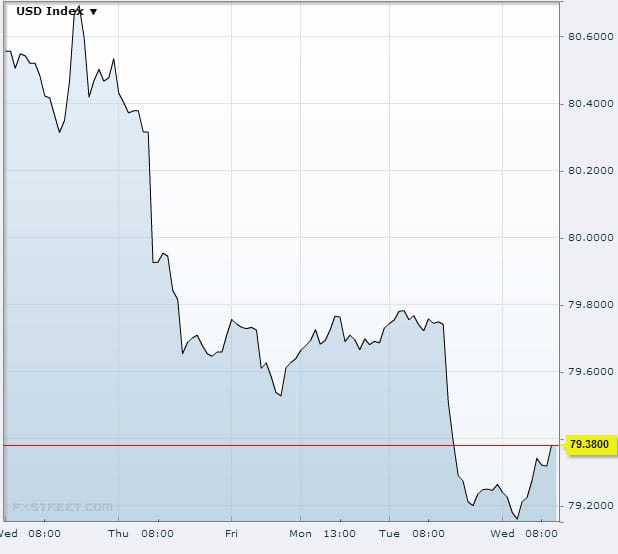The release of disappointing US jobs data pushed the dollar index down to near a nine month low yesterday, dashing hopes for a reduction in monetary stimulus before the new year.

Source: FXstreet
The data in question, the release of which was delayed due to the 16-day government shutdown, showed that US employers added a lot less workers than had been expected in September. This indicates that the economic recovery may have been losing momentum even before the shutdown.
The dollar also hit a new two-year low against the euro, pushing the single currency to a two-year peak against a basket of currencies. If this trend continues, it could cause problems for Europe’s already struggling economies, as a strong euro would harm exports.
The greenback also fell against the safe-haven yen, with a drop in regional shares – including a 1.2% drop in Chinese equities – negatively affecting sentiment in Asian markets.
A poll of US primary dealers, conducted by Reuters, showed a widespread belief that the Fed will not start cutting its $85 billion per month bond buying scheme until March.
The continuation of monetary stimulus means that high-yielding currencies such as the Australian dollar should extend gains. Earlier today, the Aussie climed to a four and a half month high against the greenback of $0.9758 after inflation rates came out higher than expected, reducing the chance of interest rate cuts from the central bank in Australia.
Tradersdna is a leading digital and social media platform for traders and investors. Tradersdna offers premiere resources for trading and investing education, digital resources for personal finance, market analysis and free trading guides. More about TradersDNA Features: What Does It Take to Become an Aggressive Trader? | Everything You Need to Know About White Label Trading Software | Advantages of Automated Forex Trading





































